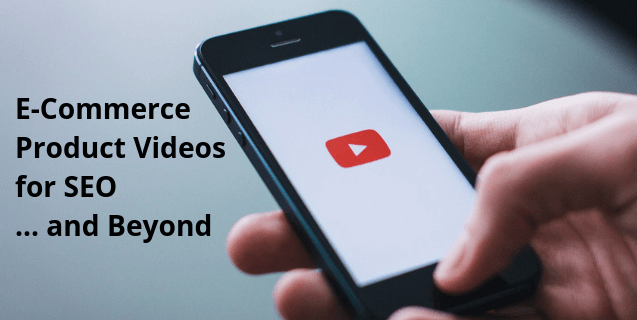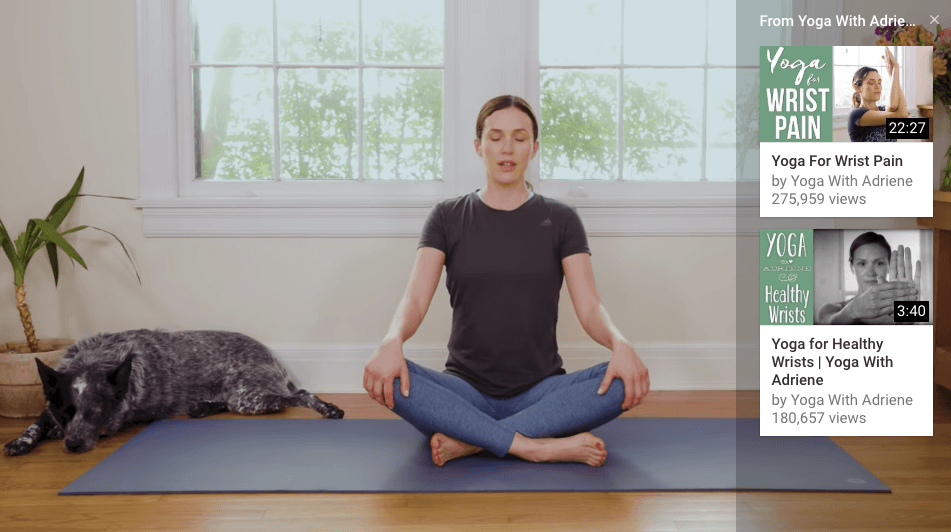
E-commerce Product Videos for SEO & Beyond
Product videos are one of the best ways to engage potential and current customers, as well as share the benefits of a given product. Customers are much more likely to purchase when they can see a product in action and get a more detailed description of its features. Becoming increasingly popular with consumers, leveraging video is a worthwhile investment for an e-commerce website, both in time and resources.
To get the most traction from your e-commerce product videos, there are a few things to keep in mind:
What is a Product Video?
The Basics
A product video shows your customers how your product looks in the real world, how a consumer can interact with it, and what benefits it provides. While quality photos can show what a product looks like in a posed environment, a compelling product video can help consumers visualize exactly how it can be used. Product videos can also advance search engine optimization strategies by:
- Increasing the amount of relevant content on your e-commerce website
- Keeping visitors on your site longer
- Creating more backlinks to your site
Unlike a commercial video, which is more likely to focus on describing a product’s general value or introducing a viewer to your brand, a product video actually demonstrates its uses and benefits. Product videos can also more effectively highlight product specifications and directly indicate how the product addresses a consumer’s pain points.
Highlighting Your Product With the Right Video
For simple products, you can often use one short video to explain their purpose, features, and benefits. Show the product in action and describe its specifications so that users can see firsthand how it works and how it can address their needs. a2 Milk does a great job of this with a simple video intro into what makes their milk different — and how people can benefit from using it.
For more complex products, you may want to create a series of videos. Use a shorter video to introduce its basic purpose and most essential features, but then create additional product videos to add depth and cover additional components, uses, or benefits. A video series gives customers a chance to take it step-by-step and to focus on which features are most important to them.
A great example of this is Asana and its use of YouTube product demonstrations. They’ve created an entire series that covers common product questions and tips for their users.
Another popular option is the unboxing video, walking consumers through each step of the set-up process from when they receive the product through its first use. Show the packaging exactly how a buyer will get it in the mail and take them through the unwrapping of each component. Explain each item and its purpose and show how it all comes together. This is a great way to leverage user-generated content (UGC), which is highly trusted and heavily consumed by most audiences. Companies are using Instagram stories and Facebook “unboxing” videos as a great way to collect UGC videos, like Horti, a plant subscription service.
How to Create E-commerce Product Videos
Planning
The first step in creating e-commerce product videos is to plan. Before you start creating a product video, make sure you have a clear idea of who your target audience is, where you’ll be sharing your video, and what you want to communicate.
At a minimum, product videos should always include:
- What the product is
- How it can benefit consumers
- How it can be purchased
But the best e-commerce videos show off the product’s best features and how they provide real value when addressing the consumer’s need. Consider any frequently asked questions about your product, the most common positive feedback it receives, and its most unique qualities when creating a script for your product video.
And don’t forget to provide transcripts of your video. Transcripts support both an improved user experience (by allowing users the opportunity to read instead of listening) and an SEO boost (by helping search engines better “read” your audio content).
Positioning
Once you’ve got a plan for what to include in the video, think about where you want people to see it. Videos on your product page or on YouTube can usually be a little bit longer, but videos shared on social media platforms do better when they’re kept short and sweet.
On your e-commerce website, a video should be included alongside product photos, specifications, and purchase information. On other platforms, consider the avenues consumers will take to find your video; relevant keywords and hashtags, for instance, are important to keep in mind when planning and creating product videos.
How Long Should a Product Video Be?
Optimal Lengths
Videos can vary widely in length depending on the complexity of the product, how detailed you want to be, and whether you’re planning one video or a series. But generally speaking, less is more. In a world where content is everywhere and information is constantly vying for consumers’ attention, you want to keep product videos to the point — and visually appealing.
According to a study from Animoto, consumers are willing to stick around longer to watch product demonstrations than they are customer testimonials or information about your company. Animoto found that 27.1% of those surveyed were willing to watch product demos for 30 to 60 seconds, while 38.1% said they would watch 1 to 3 minutes of demonstration and 21.2% said they would watch for more than 3 minutes. The recommended sweet spot is 1 to 2 minutes for demonstrations.
Platforms
Ideal video length also depends on your platform. For instance, YouTube viewers tend to watch longer videos than viewers on social media platforms. For Instagram, 30-second videos are more likely to get views, likes, and comments than longer videos. On Facebook, that benchmark is doubled: videos that are one minute or less are most likely to get higher engagements and shares. And it’s probably no surprise that shorter videos do the best when it comes to Twitter: try to stay under 45 seconds.
Use YouTube for Video Marketing
Search Power
YouTube is the second-largest search engine today. For this reason, it’s much more likely that videos will be served to your target audience when you upload and optimize videos per YouTube’s best practices. As an information source and a platform for sharing product information, it is indispensable. Plus, it’s free!
Engaged Viewers
You may find that you can leverage YouTube for all kinds of marketing purposes, but the product video is one of the best uses for the platform. Take advantage of an engaged audience and share your product’s most important features. Don’t forget to drive viewers back to your website with links, annotations, and cards (often found on the lower case “i” at the top right of videos.
Annotations and cards are clickable links and buttons you can add right into your video, allowing viewers to move seamlessly from one video to the next, or to the product or purchase page on your e-commerce site.
Leverage Video Marketing for Better Reach
By 2020, online videos will make up more than 85% of all consumer internet traffic in the US. As a result, video content is becoming exceedingly important to product-based businesses and brand, as it appeals to consumers who are new to a brand or product, as well as those you’ve already converted. Whether they last 30 seconds or 3 minutes, product videos are one of the fastest and most effective ways to show consumers the true value of your product.
If you’re wondering how product videos can boost your brand awareness and help you grow your e-commerce business, Volume Nine can help. Learn more about our e-commerce offerings and schedule a time to chat!









